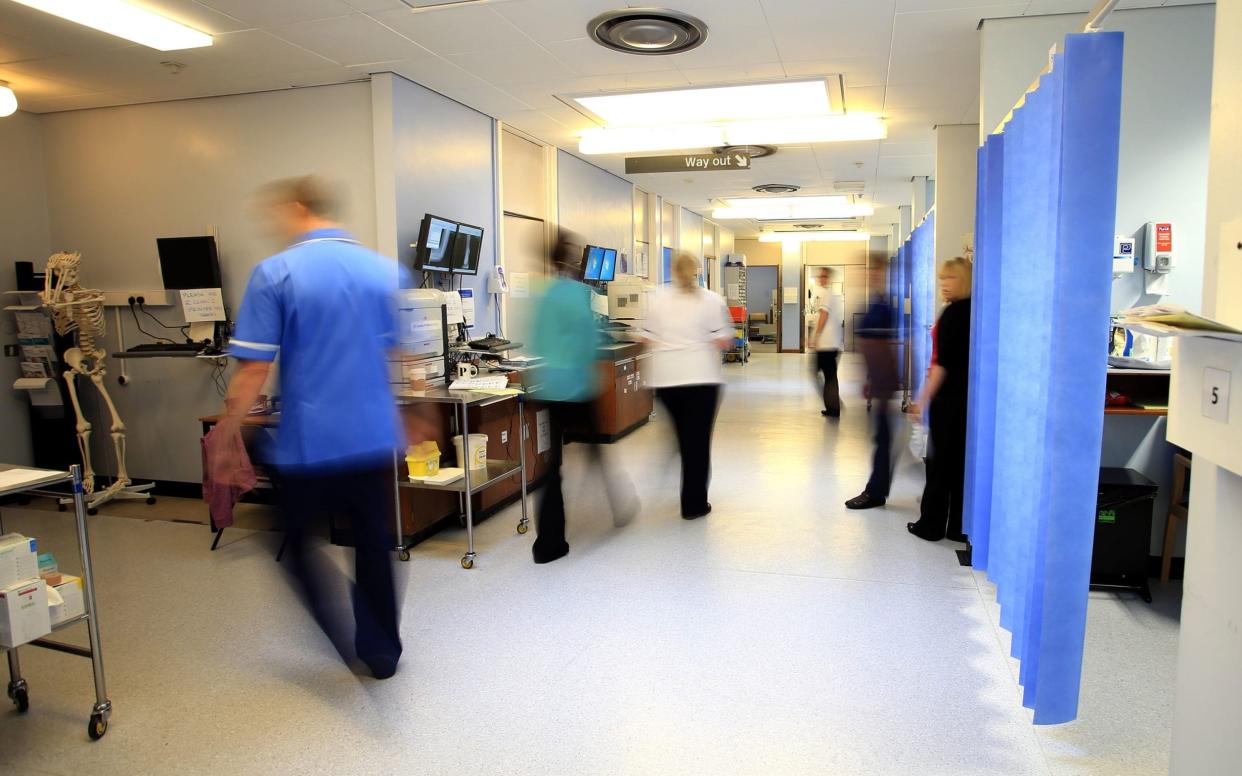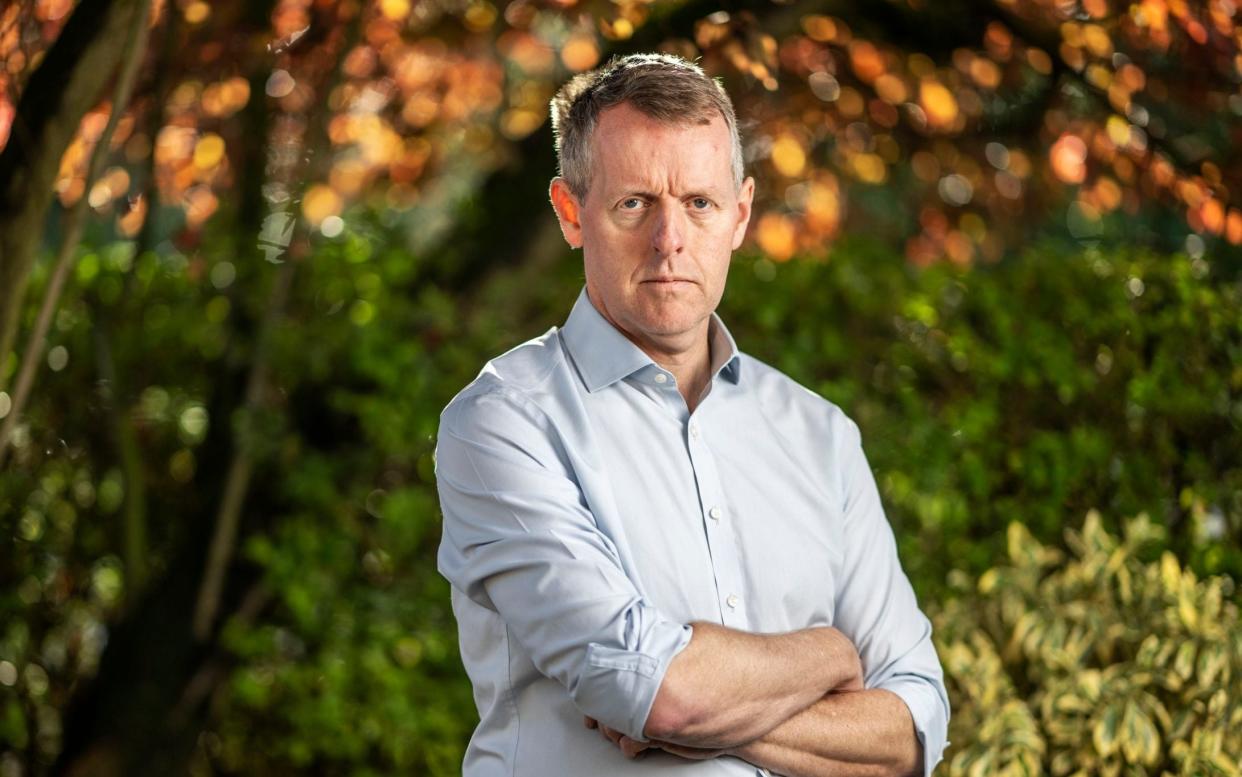Doctors under pressure to prioritise ‘quick win’ A&E cases to meet NHS bonus targets

Doctors are under pressure to prioritise less urgent cases in A&E so the NHS can gain bonuses for hitting targets, leading medics have claimed.
The Royal College of Emergency Medicine said elderly vulnerable patients were being forced to wait even longer for care as a result of a health service drive to claim performance is improving.
Hospitals are being offered bonuses of up to £2 milllion to achieve A&E targets by the end of this month, in order for the NHS to be able to claim some progress is being made.
Senior doctors said that hospitals were now under pressure to push through the “quick wins”, the low priority cases which could be dealt with quickly, while vulnerable elderly patients were being forced to wait even longer.
Dr Adrian Boyle, the president of the Royal College of Emergency Medicine, said the immediate financial rewards were “short-sighted and unhelpful” and too often leading to the wrong decisions being made.
He told the Telegraph: “The pressure is so extreme that it is distorting clinical priorities, and the harm is on patients, and in particular the elderly patients.”

In January last year, the NHS recovery plan set a target of 76 per cent of patients attending A&E to be admitted, transferred or discharged within four hours by March 2024.
The delivery plan for recovering urgent and emergency care was drawn up by the Department of Health and NHS England amid some of the worst waiting times on record.
The 76 per cent aim is far lower than the official target of 95 per cent, which has not been hit since 2015, but performance against even this lowered bar has yet to be achieved.
Figures for February show just 69 per cent of cases were treated within four hours across England.
Now medics and NHS senior managers say they are being put under pressure to rush some of the lowest-risk patients through.
The practice has echoes of the Mid Staffs scandal, where nurses and medics repeatedly warned of the distortion of clinical priorities to hit the four-hour target, with the most vulnerable patients left to suffer.
Dr Adrian Boyle said: “Everyone focuses on the quick wins and the easier patients and we know that far too many people, once they have waited beyond four hours, they get stuck.
“So we know that last year there were more than 1.5 million people who stayed more than 12 hours in A&E.”
“I’m worried that we have forgotten what we learned in the Mid Staffs inquiry,” he added.
Drive is ‘politically motivated’
One junior doctor from Newcastle said she had been driven to despair by the delays in treating vulnerable elderly patients in a bid to hit targets.
She said medics were regularly facing “awful scenarios” because of a drive by NHS England which was distorting priorities.
She said “messaging from NHS E (England) in the last month that suddenly the four-hour target is the most important thing that we can do” meant the most vulnerable people were forced to the back of the queue.
During an LBC phone-in with Wes Streeting, the Labour Health spokesman, she said: “You end up in a bizarre situation where you have well patients taking beds when there is someone elderly and sitting on a chair for over 24 hours waiting for that bed, but because your patient is at 3 hours 59 minutes they are being moved.”
Mr Streeting said it was a disgrace that elderly people were “waiting entire days in pain and agony at A&E.”
He said: “Rishi Sunak is desperate to twist the figures and make it look like the NHS is recovering. If only he was just as desperate to turn the NHS around for real.”
Earlier this month, NHS England announced new financial bonuses for trusts which do well against the four-hour target. The 10 trusts with the best four-hour performance during March will each receive £2 million.
It came after the Health Service Journal (HSJ) reported that trust chief executives were sent a form to sign, committing to deliver 76 per cent for the final month of the financial year.
Several managers said they had been told to focus on patients who did not need to be admitted, which are typically faster to deal with.
One chief executive in the north of England told HSJ: “It’s a complete nonsense and just politically motivated. We’re getting a very clear message to hit 76 per cent, which is hugely problematic because it will drive non patient focussed behaviour.”
Four-hour target ‘exists for a reason’
An NHS England spokesman said: “The four-hour A&E target exists for a reason, and it is absolutely right that everything possible is being done to improve performance because that will ultimately ensure that patients get the urgent care they need in a timely way.
“We have seen significant increases in demand for A&E services, with attendances in February up 8.6 per cent on last year and emergency admissions up 7.7 per cent.
“So it is right that there is a national effort on seeing more patients as quickly as we can, and our urgent and emergency care recovery plan, backed by extra funding with more beds, capacity and greater use of measures like same day emergency care is delivering improvements.”
A Department of Health and Social Care spokesman said: “We are committed to ensuring people get the emergency care they need, when they need it, and all patients attending A&E are assessed by a doctor or nurse before any treatment takes place, to ensure the most seriously unwell people are treated first.
“Thanks to our £200 million Urgent Care Recovery Plan, A&E four-hour performance improved in February compared to January, despite the highest number of February A&E attendances on record and the impact of industrial action.
“We are determined to continue improving patient care, having already delivered on our promise to create 5,000 extra permanent hospital beds and 10,000 hospital at home beds, freeing up capacity and cutting waiting times.”


